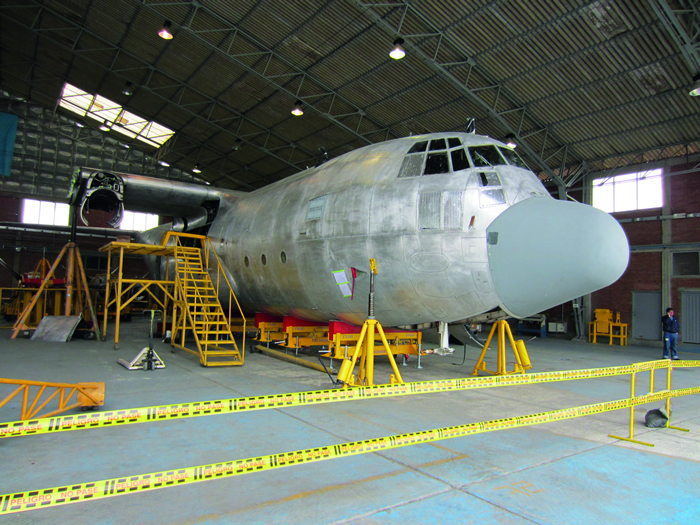Magnetic Particle Technique: Lab Case of CAMAN
DOI:
https://doi.org/10.18667/cienciaypoderaereo.435Keywords:
Magnetic Particle Technique, NDT Inspection Lab, NDT testsAbstract
This article presents the general procedure for the use of the technique of magnetic particles; generally describes the main characteristics of the test and inspection procedure from CAMAN Lab developed at the Graduate School of the Colombian Air Force. The method used in the research and development of the project was documentary, in order to establish the rules and regulations required for certification of the magnetic particles technique in nondestructive testing laboratory by the Aeronautical Authority. Finally, based on the data analysis, an Inspection Procedure Manual was developed in order to certify the magnetic particles technique.Downloads
References
AEND. (2002). Particulas Magneticas Nivel II (End: Ensayos No Destructivos) (Vol. 1). Madrid, España: FUND. CONFEMETAL.
Arango, A. (2011). Análisis de Datos Cualitativos. ,. Medellín, Antioquia, Colombia.
ASNT CP-189. (2006). Standard For Qualification And Certification Of Nondestructive Testing Personnel. 2006. Norma, United states.
ASTM E 1316. (2012). Standard Terminology for Nondestructive Examinations. Normas técnicas, ASTM INTERNATIONAL, United States.
ASTM E 709. (2008). Standard Guide for Magnetic Particle Examinations. ASTM E 709. Norma Internacional, ASTM INTERNATIONAL, United States.
ASTM E1359. (2012). Norma, ASTM Internatonal.
ASTM E1444 / E1444M. (2012). ASTM E1444 / E1444M - 12 Standard Practice for Magnetic Particle Testing. Normas técnicas, ASTM Internatonal, EEUU.
ASTM E543. (2013). Standard Specification for Agencies Performing Nondestructive Testing. Norma, ASTM International, EEUU.
Berhsa. (2007). Artículo 7. Recuperado el 5 de Febrero de 2013, de scribd: http://es.scribd.com/doc/98388337/Articulo-7-Ensayo-Particulas-Magneticas
Castaño Carmona, E. (2012). Tecnun. Campos tecnológico Universidad de Navarra. Recuperado el 19 de Febrero de 2013, de Tecnun. Campos tecnológico Universidad de Navarra: http://www.tecnun.es/asignaturas/PFM_Mat/Prog/Dia_Para.pdf
Castaño Carmona, E. (2012). Tecnun. Campos tecnológico Universidad de Navarra. Recuperado el 19 de Febrero de 2013, de Tecnun. Campos tecnológico Universidad de Navarra: http://www.tecnun.es/asignaturas/PFM_Mat/Prog/Ferrom.pdf
Castaño Carmona, E. (2012). Tecnun. Campus tecnológico Universidad de Navarra. Recuperado el 19 de Febrero de 2013, de Tecnun. Campus tecnológico Universidad de Navarra: http://www.tecnun.es/asignaturas/PFM_Mat/Prog/Matmagv2.pdf
CETP/UTU. (2011). Partículas Magnetizables. CETP/UTU, Ingeniería. Montevideo Urugay: Servicio de Mateniemiento.
Creswell, J. W. (2008). Muestreo por conveniencia.
De Debold B., V. D., & William J., M. (1971). Manual de técnica de la investigación educacional.
Echeverria, R. (2002). Partículas Magnetizables. Laboratorio NDT, Universidad Nacional de Comahue.
Equipos y Laboratorios de Colombia, S. (2011). Equipos y Laboratorios de Colombia. Recuperado el 14 de Febrero de 2013, de Equipos y Laboratorios de Colombia: http://www.equiposylaboratorio.com/sitio/contenidos_mo.php?it=5079
Fuerza Aérea Colombiana (2008). Manual de Mantenimiento. Bogotá Colombia.
FuerzaAérea Colombiana. (2011). Partículas Magnetizables. Servicio de Mateniemiento - Dpto de Ingeniería. Bogotá Colombia
Gonzales, J. (7 de Mayo de 2011). scribd. Recuperado el 13 de Febrero de 2013, de scribd: http://es.scribd.com/doc/59384227/PARTICULAS-MAGNETICAS-COMPLETO
Hernández Sampieri, R., Fernández-Collado, C., & Baptista Lucio, P. (2007). Metodología de la investigación (Cuarta ed.). México, México: McGraw-Hill Interamericana.
Industrial Aeronautica. (2004). Partículas Magnéticas. Curso de Ensayos no destructivos.
Infanzón, S., & Romero, J. (2003). Los Ensayos No Destructivos en la detección de ataque por hidrógeno a alta temperatura. Conferencias PANNDT 2003, Rio de Janeiro.
Isotec. (2010). Inspección y Diagnóstico Técnico. Recuperado el 24 de Enero de 2013, de Isotec: http://www.isotec.com.co/
Llanos Pozzi, M. J. (1994). Aproximaciones cualitativas y cuantitativas . En J. W. Creswell, Diseño de investigación (págs. 143-171). Buenos Aires, Argentina: Sage.
Llog. (2010). Ilog S.A. Recuperado el 24 de Enero de 2013, de http://www.llogsa.com/
Muñoz Abella, M. (2002). Mantenimiento Industrial. Informes de lectura de clase, Universidad Carlos III de Madrid, Área de Ingeniería Mecánica, Madrid.
Mantenimiento Industrial. (2002). Recuperado el 15 de Febrero de 2013, de Scribd:http://es.scribd.com/doc/39863503/Particulas-magneticas
Obtesol. (27 de Febrero de 2007). Observatorio Tecnológico de la Soldadura. Recuperado el 24 de Enero de 2013, de Obtesol: http://www.obtesol.es/
RAC. (2011). Reglamento Aeronáutico Colombiano RAC. Unidad Administrativa Especial de la Aeronáutica Civil Colombiana. Colombia: Aeronáutica Civil.
UNLP. (2012). Partículas Magnéticas. Cátedra - Ensayos no Destructivos (págs. 1-25). La plata: Departamento de Aeronáutica.
Yanhua, S., Yihua, K., & Chen, Q. (2011). A new NDT method based on permanent magnetic field perturbation. NDT&E International(44), 7.

Downloads
Published
Issue
Section
License
Assignment of Copyrights
Authors assign Ciencia y Poder Aéreo journal the exclusive rights (reproduction, distribution, public communication, and transformation) to exploit and commercialize their work, in whole or in part, in all the formats and modalities of present or future exploitation, in all languages, throughout the life of the work and throughout the world.
All contents published in Ciencia y Poder Aéreo journal are licensed under a Creative Commons Attribution 4.0 International License, whose complete information is available at http://creativecommons.org/licenses/by/4.0/
Under the terms of this license, users are free to download, print, extract, archive, distribute and publicly communicate the content of articles, provided that proper credit is granted to authors and Ciencia y Poder Aéreo, scientific journal of the Graduate School of the Colombian Air Force. Except when otherwise indicated, this site and its contents are licensed under a Creative Commons Attribution 4.0 International License.
For other uses not considered under this license it is required to contact the Director or the Editor of the journal at the e-mail address cienciaypoderaereo1@gmail.com.
The Graduate School of the Colombian Air Force and this publication are not responsible for the concepts expressed in the articles, including the metadata or the affiliation stated by authors. This is the full responsibility of the authors.





















